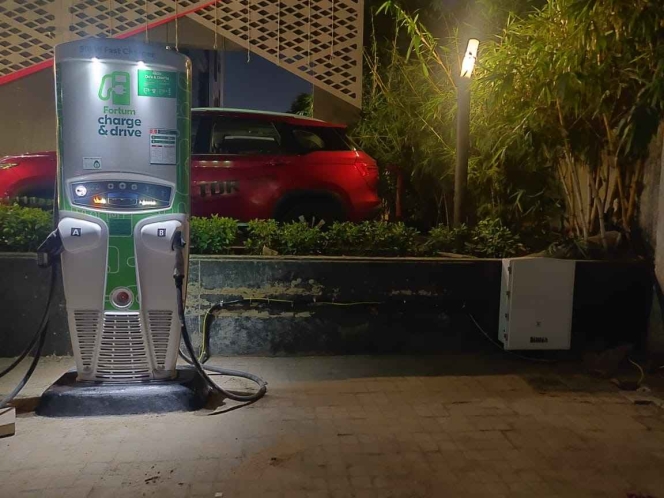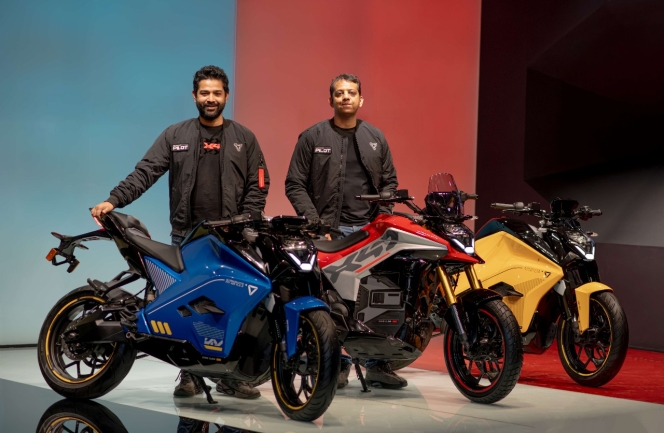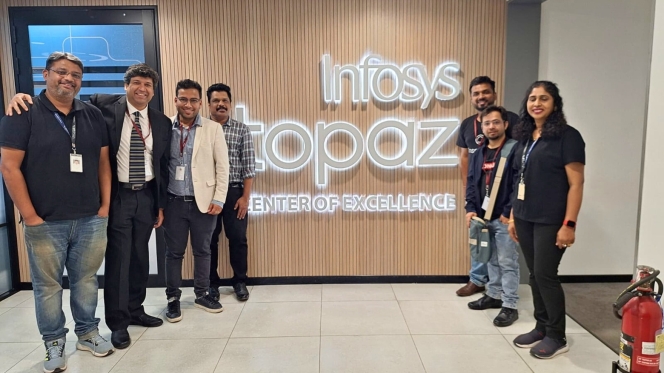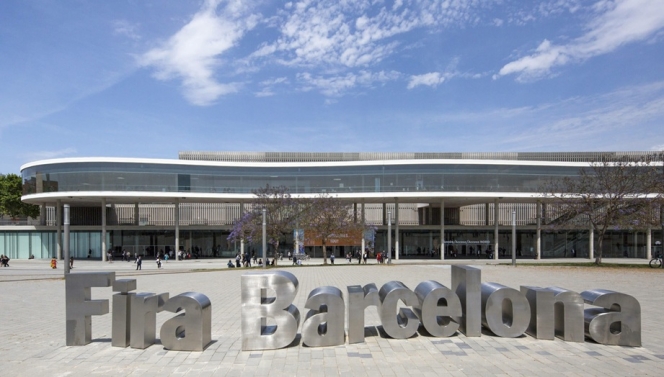Robust, Smart Charging Network Needed To Boost EV Proliferation
- By 0
- April 05, 2020

.jpg)
Q: India is the first country outside of Europe where you are operating. Why this entry?
Jha: The Indian market is different from the Nordic and European markets, and it is the first country outside Europe, where Fortum entered the electric vehicle charging space in 2017. We have integrated a couple of Indian chargers into our system and this enables us to deploy ‘Made in India’ chargers to our network. This will give our customers the freedom to choose the chargers, their availability, price and other benefits.
Fortum established its first charging station in New Delhi in 2017. Its services in India include owning charging infrastructure, operating other’s charging infrastructure network using Fortum’s own cloud-based charging system and selling Fortum’s proven off-the-shelf cloud system to other operators to manage charging infrastructure in the B2B segment.
Q: How do you see and predict the EV market in India?
Jha: India will benefit from the global growth of EV technologies and can reach a maturity stage faster than in other countries. As Tesla did for the US market, start-ups in India are poised to promote the adoption of EVs. Free from any legacy baggage, they are able to offer pure electric vehicles as is evident on the road, particularly in the two and three-wheeler sector. Traditional OEMs also are trying to hold on to their market share. Hyundai has taken the lead by introducing Kona. The electric version of Maruti cars can be seen on the road though in test mode. More than ten models of electric vehicles are slated for launch in the next 12-18 months. Tata Motors has announced plans to introduce more models of the electric variant. Mahindra promises to launch KUV 100 and SUV 300 with the electric powertrain. With India poised to become the third-largest auto market in the world, none of the players would like to miss this great opportunity.
With more and more renewable energy being fed into the grid, the use of EVs will provide the flexible load to balance the system.
Q: What are the fundamental differences between India and Europe in terms of vehicle requirements and charging infrastructure?
Jha: India and Europe share a common requirement in the automobile space. India generally follows the European automotive emission norms as Euro 6. Europe started the EV journey with high voltage system cars like Nissan Leaf, which warrants a different set of chargers to offer good customer experience. Starting from 50kW DC chargers, Europe has moved to high power charging capacity of 350kW in DC mode which brings down the charging time to about 10 minutes for a 150-200km range. On the AC side in public charging, it has a network of 22kW chargers which offer semi-fast charging to most of the vehicles. The 3.3 kW AC chargers are generally deployed at home and parking places.
India, on the other hand, has a different vehicle composition. Most of its EVs are two and three-wheelers which have a different kind of charging need. They are currently dominated by lead-acid batteries. In the four-wheeler passenger car segment also, India started with a unique product. The available cars are on low voltage battery system, which requires a different set of chargers – 15/20 kW power in DC mode. They need longer charging time than their counterparts in Europe where a car with almost double the size of battery can get charged in nearly half the charging time than in India. Now, a few OEMs have started selling high voltage system cars which would require 50kW charging infrastructure.
Another significant difference between Europe and India is the need for public charging. Most of the European countries have single-family low-rise homes with garage whereas Indian cities like Delhi have mostly unorganised street parking. This fundamentally alters the need of charging infrastructure in India. While in Europe home charging would be dominating, India will need public charging as the dominant mode.
.jpg) Q: Charging infrastructure and time is probably the biggest hindrance in the adaptation of EVs in India? How do you find opportunities in this area?
Q: Charging infrastructure and time is probably the biggest hindrance in the adaptation of EVs in India? How do you find opportunities in this area?
Jha: Three major interdependent stakeholders influence the evolvement of EVs in any country. They are: automobile manufacturers, battery manufacturers, and charging infrastructure providers. Given the limited use of e-vehicles in India now, the infrastructure for the same is also at a very nascent stage. The lack of sufficient infrastructure could be the most common reason for the range concern that directly affects the consumer behaviour and potential of EV sales in India. However, from the operators’ point of view, it is difficult to invest in charging infrastructure without an existing demand for charging services.
India will need ubiquitous public charging networks. India needs millions of charging points once all cars sales happen on the electric platform. This offers huge opportunity for both the private and the public sectors. However, considering the space constraint and inadequate electricity infrastructure, setting up such a massive network of public charging will be a demanding task. Government support will be required in making locations available for this purpose if we have to roll out a good network of charging stations.
For EVs to be acceptable, consumers have to be assured of the availability of charging stations like fuel stations for ICE vehicles. A robust charging station network would give them confidence, and that would work as a pull effect on OEMs.
Q: India is a vast country. How are you going to identify and target the regions or pockets where EV adaptation will be faster?
Jha: As it happens with any new technological product, initially EV will be adopted by innovators or early adopters. We expect that these vehicles will be adopted mostly in cities with the highest per capita income. We operate now in five cities: Delhi-NCR, Mumbai, Bengaluru, Hyderabad and Ahmedabad. We have 66 DC public charging points. Since the launch of our DC fast-charging stations in Hyderabad, we have seen positive adoption of electric vehicles by customers. We have more than 900 registered users, and more than 1500 customers have downloaded our mobile app. These are smart chargers which are unmanned and give freedom to the consumer to charge their vehicles at the location of their choice, and at their convenience.
Q: Do you think public utility places would play a more prominent role in increasing the number of EV charging stations? Could you highlight Fortum India’s partnership with Indian Oil?
Jha: We provide our bit in creating reliable and smart charging infrastructure. Our first DC fast public charging station in Hyderabad came up at IOC COCO retail outlet at Begumpet. We are operating 16 charging points at eight retail outlets of IOC in Hyderabad. We demonstrated our capability of operating smart chargers by unveiling the charging of Mahindra e2oplus remotely from Hotel ITC Kakatiya, Hyderabad, using Fortum Charge & Drive Mobile App.
Q: How many EV charging stations has Fortum India set up so far, and what is the immediate target?
Jha: Fortum has made 66 DC Fast charging points operational in Delhi-NCR, Hyderabad, Mumbai, Bengaluru, and Ahmedabad. Fortum Charge & Drive also offers a cloud solution to EV charging service providers and infrastructure investors.
Recently, we have established India’s first public charging network of 50 kW DC chargers at dealership locations of MG Motors. Any car owner can access these stations if the car is compatible with CCS/CHAdeMO standards. We are continuously evaluating opportunities across the country.
Q: How do you see the role of the stakeholders such as charging station infrastructure manufacturers, energy companies and operators in the growth of EV adoption?
Jha: Each stakeholder has a role to play in EV adoption in India. It is important to note that it is the vehicle and its battery system which determines the charging infrastructure need, not otherwise. The charging standards or capacity of chargers or time of charging, and everything is dependent on the design of the battery and its management system adopted by the OEMs. Charging manufacturers and operators follow the demand. In charging ecosystem, manufacturer caters to the supply side by offering his product which can be put to use by charge point operators at strategic locations. Energy distribution companies also have a critical role to play. EV charging, particularly public charging in DC mode, requires high capacity which might need augmentation of electricity infrastructure. Energy to Charge Point Operators (CPOs) should be provided at a reasonable price so that end-consumers can charge their vehicles at affordable prices. Efforts of all these stakeholders have to get aligned.
Q: What have been the ground-level challenges for Fortum India?
Jha: Access to a suitable location and electricity supply is a major challenge. The number of EVs initially will be less, so also the business for the Charge Point Operators. It will be more challenging if CPOs have to pay rent for the space or bear any upfront cost on electricity infrastructure. So it is expected that these two parts would be taken care of by the government or partners to make EVs affordable for the customers.
Q: Being in the EV charging station space, what do you expect from the government?
Jha: For the manufacture of EVs and the growth of the industry, the government introduced the FAME scheme. It would also support the manufacturing of advanced batteries which will accelerate the adoption of EVs by bringing down the cost of the battery. Tax reduction is a significant boost for the consumer as it would push the EV price to inch towards ICE vehicle price.
Creating a robust and smart charging network should be the focus. Although through FAME-II the government has called for proposals on the setting up of 1000 electric vehicle charging stations in the country, this is not enough. Consumers would like to have charging points at their preferred locations, time, and price to avoid range anxiety. This requires a robust, ubiquitous, and friendly charging network of stations. As charging takes more time than gasoline refuelling, the consumer would like to find a charging station in an exciting place where he would feel happy to spend time while the vehicle gets charged.
We have to add lakhs of charging points year after year if in future all vehicles sold are electric. This would require access to space, which is scarce, particularly in urban areas. Augmented electricity infrastructure would be needed at the local network level even though at the national level this will not be significant. So if the government finds some ways to offer space and upgrades electricity connections on the plug-and-play mode to CPOs it will give a boost to the creation of charging infrastructure.
EV charging would be a different proposition. Unlike oil and CNG, this has interdependency of battery and electricity. Appropriate communication is needed between battery and charger, and charge and grid, to ensure safety and reliability to the vehicle and grid. This necessitates that charging infrastructure must be smart. This would also warrant a smart grid. What is needed is a greater and urgent push towards upgradation and strengthening of both electricity and charging infrastructure. (MT)
Neusoft And MapmyIndia Partner For Intelligent Mobility Solutions
- By MT Bureau
- December 06, 2025

Chinese technology company Neusoft Corporation and Mappls MapmyIndia have signed a Memorandum of Understanding (MoU) to leverage their strengths in software and data resources to collaborate deeply.
The companies will engage in joint technological development, ecosystem collaboration and resource integration to provide navigation products and intelligent mobility solutions tailored to localised needs in emerging markets such as Southeast Asia and India.
The partnership is a response to the fact that while global auto brands are expanding into Southeast Asia and India, they face challenges in these regions due to complex road conditions, unique traffic rules, extensive addressing systems and high localisation adaptation costs. These issues limit the ability of automakers to deliver a complete intelligent user experience.
Under the collaboration, Neusoft will adopt its OneCoreGo Global Intelligent Mobility Solution 6.0 Plus as the core technology carrier, deeply integrating MapmyIndia's map data, real-time traffic information and multi-dimensional value-added services. MapmyIndia is noted as the largest local mapping company in India, holding more than 90 percent market share in in-vehicle navigation.
The integration is intended to strengthen a full capability loop of ‘navigation + payment + interaction + connectivity + operations’.
Through API integration and technological convergence, the two parties will jointly develop navigation products and mobility solutions highly adapted to Southeast Asia, India and similar regional markets. These solutions will deliver precise route planning and real-time traffic guidance, address local user needs and continuously enhance product experience and scenario-based services. This will help automotive partners rapidly launch intelligent vehicle models with competitiveness in local markets.
The partnership enables Neusoft to combine the global end-to-end strengths of its solution with localised ecosystem resources, paving the ‘last mile’ for automakers entering the Southeast Asian and Indian markets and delivering comprehensive intelligent mobility experiences.
- Ultraviolette Automotive
- Zoho Corporation
- Lingotto
- F77
- X-47
- Shockwave
- Tesseract
- Narayan Subramaniam
- Niraj Rajmohan
Ultraviolette Secures $45 Million Growth Capital From Zoho And Lingotto
- By MT Bureau
- December 04, 2025

Bengaluru-based electric vehicle maker Ultraviolette Automotive has secured USD 45 million from Zoho Corporation and Lingotto, one of Europe's investment management companies as part of its ongoing Series E investment round.
The investment from Zoho Corporation was led by Sridhar Vembu, Mani Vembu and Kumar Vembu.
This growth capital will accelerate the domestic and international scale-up of current products F77 and X-47, as well as future product platforms Shockwave and Tesseract.
Ultraviolette has built a design and technology-led enterprise with the F77 and the recently launched X-47.
The company has expanded to 30 cities across India in a short span of 12 months and is expanding to 100 cities by mid-2026. The F77 motorcycles were recently launched in the United Kingdom, bringing Ultraviolette's presence to 12 countries across Europe.
Narayan Subramaniam, Co-Founder & CEO, Ultraviolette Automotive, said, “We are glad to announce our Series E investment from Zoho and Lingotto. Lingotto's legacy of backing iconic performance and mobility brands, combined with Zoho's long-term commitment to fostering cutting-edge Indian innovation, aligns perfectly with Ultraviolette's mission to build category-defining electric mobility solutions for India and global markets.”
Niraj Rajmohan, CTO & Co-Founder, Ultraviolette, said, "With the ongoing Series E investments, we are doubling down on growth and expanding our production to meet increasing demand. Our focus is on advancing breakthrough battery technology, elevating performance capabilities and expanding production to support upcoming product platforms. This investment will accelerate our journey towards scaling into India and global markets."
Disseqt AI Partners Tata Technologies And Infosys For Agentic AI Adoption
- By MT Bureau
- December 04, 2025

Agentic AI platform Disseqt AI has announced a partnership with Tata Technologies and Infosys. As per the agreement, Disseqt AI will assist both companies' IT and DevOps teams in developing and fast-tracking the production of tailored Agentic AI applications for automobile and FinTech companies globally.
The partnership aims to help auto and FinTech firms embrace customised Agentic AI faster and in a secure manner.
Disseqt AI, which has operations in Bengaluru, San Francisco and Dublin, provides an enterprise-grade platform for IT and DevOps teams. The company claims its platform cuts down Agentic AI testing and operations cost by 70 percent and improves productivity by up to 80 percent. The platform allows these teams to test, simulate and monitor their Agentic AI systems tailored across industries, ultimately enabling enterprises to operationalise tailored Agentic AI faster and at scale, without sacrificing ethics, governance and compliance.
Apoorva Kumar, Founder and CEO, Disseqt AI, said, “This is a landmark announcement for us as we further embed Disseqt into enterprise workflows for testing, simulation, monitoring and auditability purposes. We are already working closely with both Tata and Infosys on several projects and are proud to be part of their innovation initiatives”
Last month, Disseqt AI announced a strategic collaboration with HCLTech and Microsoft to guide financial services institutions with Agentic AI adoption.
Battery Passport Implementation Beyond EVs To Be Focus Of Barcelona Event
- By MT Bureau
- December 03, 2025

Battery and Energy Storage Europe has announced a programme focused on the EU Battery Passport, a regulatory milestone that becomes mandatory in February 2027. The Barcelona-based event will address the compliance gap for applications beyond the electric vehicle (EV) sector, which have dominated the conversation to date.
The event, taking place on 8th and 9th September 2026 at Fira de Barcelona's Gran Via venue, will focus on solutions and talks for applications that fall within the regulation's scope: stationary energy storage, industrial batteries, grid-scale systems, long-duration energy storage and emerging applications in aerospace, maritime and rail electrification.
With the February 2027 legal requirement date approaching, the programme will bring together industry leaders, technology providers, and policy experts to address the compliance challenges facing these diverse sectors.
The Battery Passport is a digital record documenting a battery's entire lifecycle, from raw material sourcing to production, performance and eventual recycling. From February 2027, it becomes mandatory for all rechargeable EV, industrial and LMT batteries over 2 kWh sold in the EU.
Linked via QR code, the passport will track each battery's complete lifecycle, including composition, carbon footprint and recycled content, fundamentally transforming supply chain transparency and sustainability practices across Europe.
The programme will explore implementation topics including digital infrastructure requirements, data management systems, supply chain integration, verification processes and recycling traceability.
Ken Davies, Conference Programme Director at Battery and Energy Storage Europe, said, "The Battery Passport represents one of the most significant regulatory shifts our industry has faced, yet many companies are still grappling with what implementation actually means for their operations. While the EV sector has dominated the conversation, there's a critical need to address how this regulation applies to stationary storage, industrial applications and the innovative battery technologies powering Europe's energy transition. With the clock ticking toward February 2027, Battery and Energy Storage Europe will shine a light on the practical implementation requirements for these often-overlooked sectors, connecting stakeholders with actionable solutions and bringing together the expertise, technology providers, and collaborative spirit needed to turn compliance into competitive advantage across the full spectrum of battery applications."





Comments (0)
ADD COMMENT